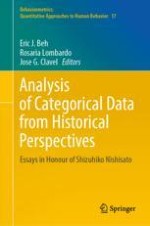This collection of essays is in honor of Shizuhiko Nishisato on his 88th birthday and consists of invited contributions only. The book contains essays on the analysis of categorical data, which includes quantification theory, cluster analysis, and other areas of multidimensional data analysis, covering more than half a century of research by the 41 interdisciplinary and international researchers who are contributors. Thus, it offers the wisdom and experience of work past and present and attracts a new generation of researchers to this field. Central to this wisdom and experience is that of Prof. Nishisato, who has spent much of the past 60 years mentoring and providing leadership in the research of quantification theory, especially that of “dual scaling”. The book includes contributions by leading researchers who have worked alongside Prof. Nishisato, published with him, been mentored by him, or whose work has been influenced by the research he has undertaken over his illustrious career. This book inspires researchers young and old as it highlights the significant contributions, past and present, that Prof. Nishisato has made in his field.
